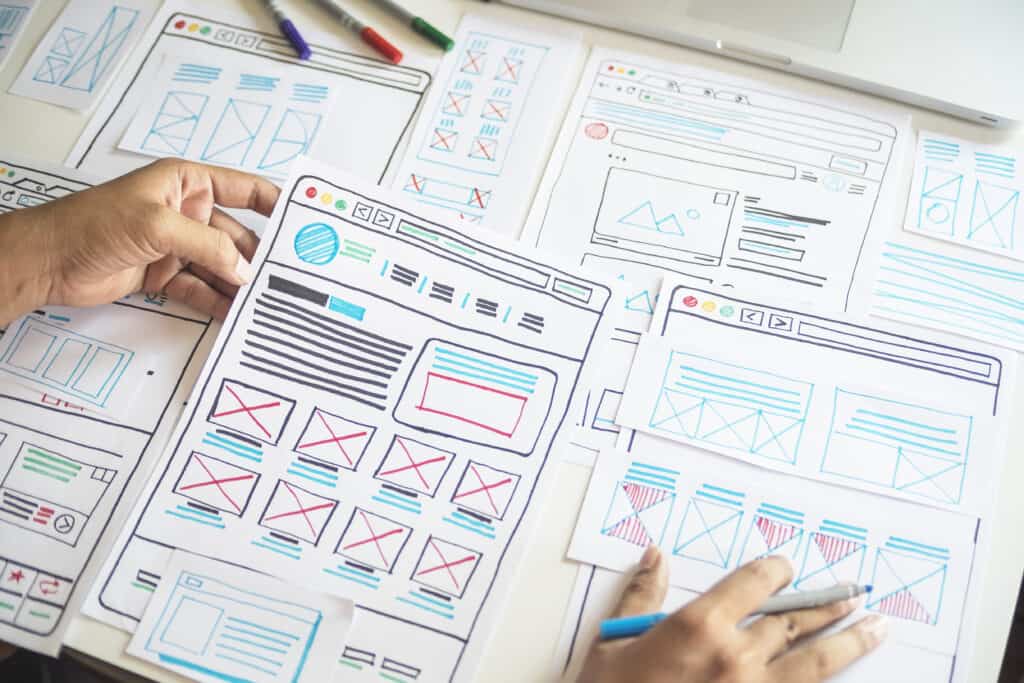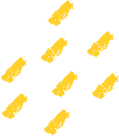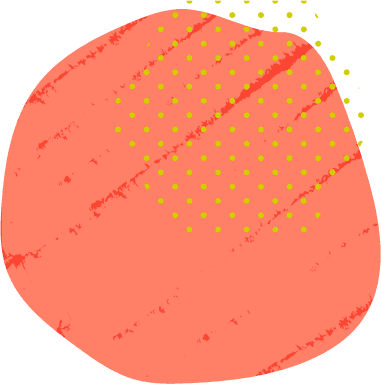UX designer, it’s the ubiquitous buzzword that seems to be popping up everywhere. Everyone wants to hire one, everyone is trying to be one, but nobody actually seems to know what it means. Is ‘UX’ an abbreviation or euphemism? Is it a design job or a tech job? To cut it short, what is a UX designer?
The answer may not be as straightforward as you think — to the extent that UX designers might even spend a large portion of their careers explaining their value to even their employers. What is certain, though, is UX is a new and exciting field that is more than worthy of its recent usurpation of this century’s hotly contested it-job status (sorry data scientists).
Let’s stop adding to the untouched pile of UX-related internet searches. It’s time to get some answers!
Meet Philippe
What is a UX Designer?
Steps to Becoming a UX Designer
Future Outlook
Best Thing & Worst Thing
Advice for Aspiring UX Designers
Meet Philippe
Not to write myself off, but I definitely thought it was best to ask someone who actually knew what they were talking about before giving you the low down on this profession.
So, let me introduce you to Philippe Hong, founder and director of one of the most innovative and well-connected UX/UI design agencies in Sydney, Raw.Studio. Raw.Studio is a full-service agency that specialises in Market Research, User Experience Optimisation (UX), User Interface (UI) and Branding.
Raw.Studio has worked with companies all around the world to improve their UX and help them reach whole new levels of digital success, with an impressive portfolio. Now, its founder has been nice enough to sit down with me to get to the bottom of our journey to find out just what a UX designer is.
How did you end up in this role?
Not every UX designer starts out the same, especially because it’s quite a new field. Philippe’s journey to UX started with humble beginnings, working freelance where he could.
“I was freelancing when I was living back in France, so working with lots of different clients. It was mostly just friends referring me to clients and people finding me online, but it was nothing really steady.
“When I came to Australia I decided I wanted to do my own thing, so once I got my visa sorted I said to myself I’m going to do this even if I fail. I started doing what I do best, working with clients and then everything just fell into place after that,” recounts Philippe.
Studies and Experience
When Philippe was starting out, getting a degree in UX wasn’t really a thing. If you wanted to become a UX designer, you kind of had to think outside the box, which is exactly what he did.
“Back ten years ago, UX didn’t exist. So you had to kind of learn by yourself. After finishing my Art and Graphic design degree in Paris, I did a course focussed on web design, learned how to implement websites to design for the web and everything digital because I knew print design was not the future.
“From there I gained experience from working on different projects. Literally every month I was doing a different hackathon,” he tells me.
What made you want to work in this industry?
“When I finished uni, I really didn’t know what to do, but I knew it would be something creative. I was studying Art at the time and I was like, “this isn’t for me”, I didn’t want to be painting for my entire life… By luck my friend got me into a hackathon.
“I didn’t really know what to expect, but this culture of building and testing things really made me go, ‘Wow this is so impressive.’ From there I was like, ‘Okay this is it this is what I want to do,’” he explains.
What is a UX Designer?
Okay, so here is the question we’ve all been waiting for. To put it simply, a UX designer is the person that makes a product smooth and enjoyable for whoever uses it — the user.
UX stands for User Experience (so it is an abbreviation after all!) because the UX designer crafts the user’s experience to make it the best that it can be.
Have you ever gone on a website and found it was really hard to navigate? Maybe you couldn’t find the shopping cart on an ecommerce store or there was so much information scattered around the page that you didn’t know where to look.
A UX designer is the person that makes sure this kind of stuff doesn’t happen, so when you’re online shopping, the only thing you have to worry about is whether you have enough money!
UX designers can work across a whole array of products, but for the most part they work with digital products (such as websites and apps). When you really think about it, UX designers are pretty much important in every industry.
From MyGov to Facebook, every good digital product needs a team of UX designers to optimise it.
Roles and Responsibilities
The first thing that you do as a UX designer is try to understand the user-related problem, so you need to put together the key problems and questions that you need to solve and then from there you have to figure out the plan of attack. Usually that starts with user interviews, online surveys or just desk research (finding general information online).
Once you have all your research done, Philippe says, “You would start the design process. Once you have come up with a design you need to test it by doing user tests or A/B testing. When you finally get to the final design, you need to work with developers to actually implement it.
“A project generally takes around 4-8 weeks, so day to day, working as a UX designer can be really varied. It basically depends on what part of the project you’re in i.e. research, wireframing, designing, testing etc.”
Which industries can UX design be found in?
As I said earlier, UX designers can basically work in any industry that has a digital presence. If you have a website, you need a UX designer — plain and simple.
“When you’re working in an agency, every project is different. For example, I recently did a project in Architecture, but then later in property development… The next project was in investment software,” says Philippe.
What jobs do people sometimes confuse this with?
A lot of people tend to confuse UX designers with graphic designers. While it is true that they are both designers, the actual role is very different.
Graphic designers work purely on the visual elements, while a UX designer will focus on the interactions with the design.
A graphic design role is very specialised, and focusses almost exclusively on the aesthetics of a product.
UX design is much more multidisciplinary and involves more than just the visual elements of a product. The primary concern is actually the functionality of the product, which makes UX more technical than graphic design.
As Philippe put it, “UX combines both creativity and logic.”
Characteristics and Qualities
According to Job Outlook, here are some of the most important skills for a UX designer.
- Operations analysis
- Reading comprehension
- Critical thinking
- Active learning
- Complex problem solving
Philippe points out, though, “It really depends on where you work. If you work in an agency, it’s going to be different than if you work for a tech company. I would say that for people who work in agencies you’re going to develop a lot of communication skills because you’re going to be communicating a lot with the client and also making a lot of presentations.
“You’ll also be working in a very fast-paced environment so you’re quicker to switch between projects and environments. Whereas in a tech company you will be very precise and thorough in your research.”
Steps to Becoming a UX Designer
What should you study?
You might be hard struck to find a Bachelor of UX Design in Australia. It’s still kind of a developing field, so the education industry hasn’t been able to keep up.
Just like every other tech job, a degree isn’t 100% necessary, but it definitely can’t hurt. A lot of UX designers might start with a Bachelor in Design and go from there. Others might just do an online bootcamp (a fast-paced, online tech course).
Here are some degrees you might want to check out:
Philippe’s opinion is, “There are lots of resources and courses you can do, General Assembly is one of them that does a good job. It gives you the basics and the right approach, but it doesn’t really give you the creative and design skills.
“It just gives you the right approach to solve a problem. You would probably want to get those design skills from uni and then from there, learn a lot of UX principles, which is really about thinking logically.”
How long does it take to become a UX designer?
There’s really no way to measure how long it takes. Some people might pick up a junior UX researcher role straight out of their Design degree, while others might fall into UX after years of working in related fields like product development or digital marketing.
It really depends on how many projects you have under your belt, your related experience, and, most importantly, your dedication.
Industry Knowledge
As a tech related field, I asked Philippe what kind of software he uses throughout a normal day.
“We mainly use Figma for any UX or UI-related designs. Now there’s this FigJam tool which is also really cool. Internally, we also use Adobe Suite, Slack to communicate, Notion for documentation, or any other project management tools,” he responds.
What will this career look like in the future?
How in-demand is this career?
Just like most tech jobs, UX designers are in very high demand. JobOutlook even rates the future growth as very high.
While this is all well and good, Philippe warns that “there are too many people trying to come into the industry and so it has become a bit crowded”.
This is why it’s important to make sure you stand out from the crowd by having a nice portfolio under your belt before trying to make your way into the industry. It’s not all doom and gloom though, Philippe also told me, “The tech industry will still continue to grow, so as long as it continues to grow there will always be UX designers needed.”
Are there opportunities to grow or specialise?
Yes! Lots actually. As far as specialisations go, a lot of people choose to concentrate on the UI side of things, which basically means their job is more design focussed.
On the other hand, the research savvy bunch might choose to stick with UX, which is a little more about psychology, analytics and research. This is why some people in the field identify as either a UI designer, UX designer, or a UX/UI designer (meaning they do a bit of both).
Then, once you’ve had enough of working on projects, “there’s also the management side of things where you can start to manage people instead,” says Philippe. Or, he jokes, “Maybe you could, you know, start your own design studio.”
Salary
| Annual Salary | Future Growth | Skill Level Rating |
|---|---|---|
| $74,000+ | Very strong over the next 5 years | Very high skill |
What are some Influential Trends that could affect the future of UX?
UX is a volatile industry. It evolves as quickly as the new software that comes out to compliment it. UX is also affected by corresponding industry trends, like in digital marketing or even VR.
Philippe frames it as a good thing, however, saying it makes the role more exciting, “Something that’s really good about this industry is It’s always evolving. It’s evolving pretty quickly as well, so it pays to be up to date with the latest trends. Even with Figma, two years ago I wasn’t even using it. So you can really see how things are changing,” he says.
Best Thing & Worst Thing
What do you enjoy most about this job?
“Right now, I don’t design that much, but I spend a lot of time thinking strategically to solve a problem from a business point of view. And honestly I think that this is what really makes me get up in the morning.
“You know, asking myself, ‘Okay, what problem are we going to solve today?’ Every client has different problems so you’re never really doing the same thing,” says Philippe.
What do you feel is the worst part of this job?
“It’s kind of the same as every service job. It’s the client aspect of it. There are always clients that are hard to work with and you find yourself wishing that it was easier to deal with them.
“On the other hand, though, it’s kind of another skill that you have to gain, client management. For the most part it’s okay, it’s actually nice to work with lots of different people, but once you get a client that you really don’t get along with, then it can be quite frustrating,” the founder admits.
Advice for Aspiring UX Designers
What do you wish you had known before you started working in this career?
Hindsight is everything! Even super-successful agency founders have regrets. As for Philippe, the thing he regrets the most is “not having access to more resources to understand all the UX concepts”.
Admittedly, his biggest regret is mostly just due to context. Philippe himself pointed out that “it’s much easier now because all those resources are available online”. So for all you fresh-faced UX designers, make sure to appreciate, and take advantage of, all the UX resources online!
Why should people consider taking on this career?
According to Philippe, the most important quality you can have as a UX designer is a combination of creativity and logic. It’s not enough to just be creative or really good at research, you need to be amazing at both.
You should also be the type of person who craves variety, “If you’re looking for something repetitive and easy, this definitely isn’t the job for you,” says Philippe.
You’ll also need to be a natural problem-solver, and you’re going to have to get used to a little compromise too. This is a client-based role after all.
Philippe told me that there are times when you even have to betray your creative instincts by choosing a design that is more efficient than beautiful. “Sometimes you really have to sacrifice the visual aspect of a design. Meaning you really need to be open to criticism and communication,” he says.
To sum it all up, the most important attributes for a UX designer are communication, compromise, creativity and problem solving.
Job Flexibility
It’s no surprise that job flexibility in UX design is pretty great. Philippe even compared the flexible working situation to “winning the lottery.” I mean, all you really need is your laptop after all. With Figma, you can design as a team without needing to meet in person.
Philippe did raise the importance of social interaction, though. Working remotely is great, but sometimes being in person is just that little bit more efficient. For this reason, the team at Raw.studio tries to work in the office 4 days a week, and 1 day at home.
What is the workplace culture like?
This is the tech industry we’re talking about! Good working culture is what tech is literally known for. As a UX designer, you generally work way less hours than your graphic design or architect brothers and sisters, not to mention the pay is generally better too.
Philippe even told me about his, less-than-favourable, experiences working as a graphic designer, saying “the hours were really long”. “I would say that UX is much more open to change and feedback with much more flexibility,” he continues. In other words, tech is where it’s at!
Cody Williams is a Content Writer at Art of Smart Education. While Cody studied a Bachelor of Arts in International Relations and French Studies at UNSW, he quickly realised that his dream job would have him sit happily behind a keyboard. Cody’s digital writing career started with an internship at Bauer Media where he was writing for ELLE and Harper’s BAZAAR’s online publications. Once he had a taste for writing he never looked back, moving to Brisbane soon later to work as a Producer for Channel Nine Queensland. After a year in television media, he dusted off his online writing shoes so he could put them to good use, stamping out some scorching-hot career and educational resources at AOS.





